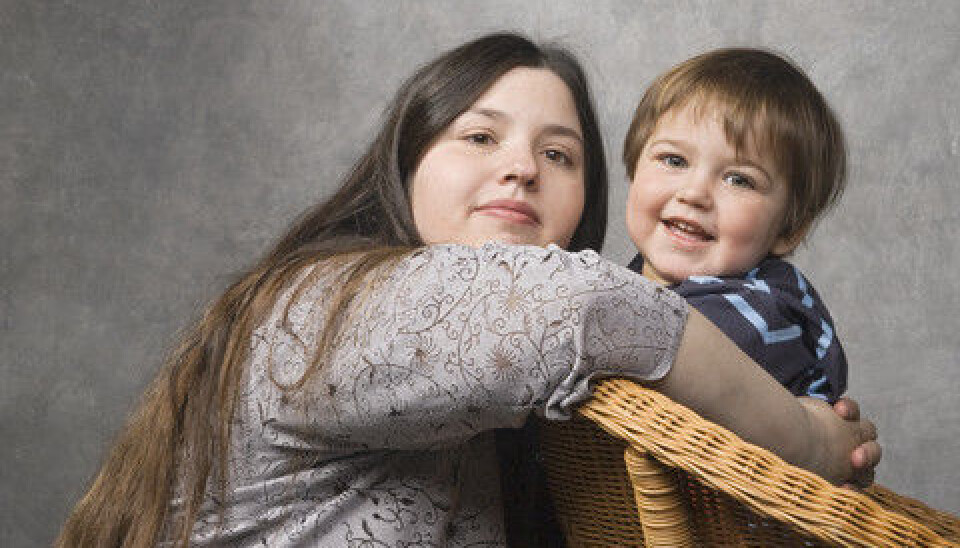This article was produced and financed by University of Stavanger

Welfare allowance may hit women’s careers
The cash-for-care benefit paid to Norwegian mothers so that they can stay at home with small children, can make them fall behind in the labour market, according to recent research.
Denne artikkelen er over ti år gammel og kan inneholde utdatert informasjon.
Carried out for a PhD at the University of Stavanger (UiS), this study shows that many women also work reduced hours up to two years after their entitlement to the benefit ends.
This finding could be important for other countries considering policies which either encourage or discourage mothers to work while their children are young, says author Nina Drange.
“Half the mothers who cut their working hours while receiving the benefit were not back in full-time work again when their child was four and cash-for-care had expired.”
Drange’s study covers all parents who had their youngest child in 1998 and no further children.

These were the first mothers able to fully benefit from the government cash allowance which let them choose to spend more time at home when their child was one and two years old.
Drange, who now works for Statistics Norway, has compared the job status of this group with mothers who gave birth in 1995 – three years before the benefit was introduced.
This study forms part of her doctoral work at the UiS on how subsidized care arrangements for Norwegian families with children influences workforce participation and child development.
A boomerang for women
According to Drange’s research, many of the mothers who have received the cash-for-care benefit are not back in full-time work until their child is six.
”So this scheme has had an unintended effect,” she says. ”A number of mothers were expected to withdraw temporarily from the labour force, but it was not expected that many would remain away from work after their child was three.”
From that perspective, the overall effect of welfare provisions intended to give families greater flexibility over child care could prove a boomerang for women.
In Norway, they might end up on the basic state pension because mothers are usually the ones who take advantage of long maternity leave, the cash-for-care benefit and part-time work.
“Women thereby fall behind in the labour market,” says Drange. “They quickly acquire the main responsibility at home and miss out on the important benefits and lessons gained at work.”
Some mothers safeguard
Drange has also looked more closely at possible differences in effects of the subsidy among mothers with or without higher education, and at those who were high or low earners.
“During the first couple of years after the cash-for-care benefit expires, when their children are two and three years old, little distinguishes these different groups,” she says.
“By the time the child is four, virtually only mothers with no higher education and poor pay are still more or less outside the labour force. The educated mothers are back in full-time work.”
She says that, surprisingly, the time out of the labour market does not seem to have any substantial effect on pay developments for mothers with higher education when their child is four-five.
“These mothers do not lose much by being partly away from work during the first few years after they have received the cash-for-care benefit”.
“My findings might suggest that they have succeeded in maintaining the necessary contact with their job by working on a part-time basis.”
Mothers with higher education are thereby able to safeguard their expertise and networks, which both play an important role in their future careers.
“These women may perhaps be aware that they have a lot to lose by being absent from work for a long time,” Drange suggests.
No effect on fathers
Drange finds no indication that the cash-for-care benefit had any effect on fathers’ participation in the labour market or on their earnings.
“Mothers work less, but fathers do not work more. The latter group may not be able to increase the amount they do because they already have a full load. It’s also possible that they don’t want to give up time at home.”
From a socio-economic perspective, Drange thinks the value of the cash-for-care benefit should be discussed.
“The price seems to be high when we see that mothers remain away from work for longer than was originally anticipated.”
Drange points out that the substantial resources invested in the scheme could have been applied elsewhere, and that Norway today has good provision for the youngest children.
“Research has shown that attending child care is beneficial for children, particularly if their parents have low education and income.”
Translated by: Rolf. E Gooderham
































